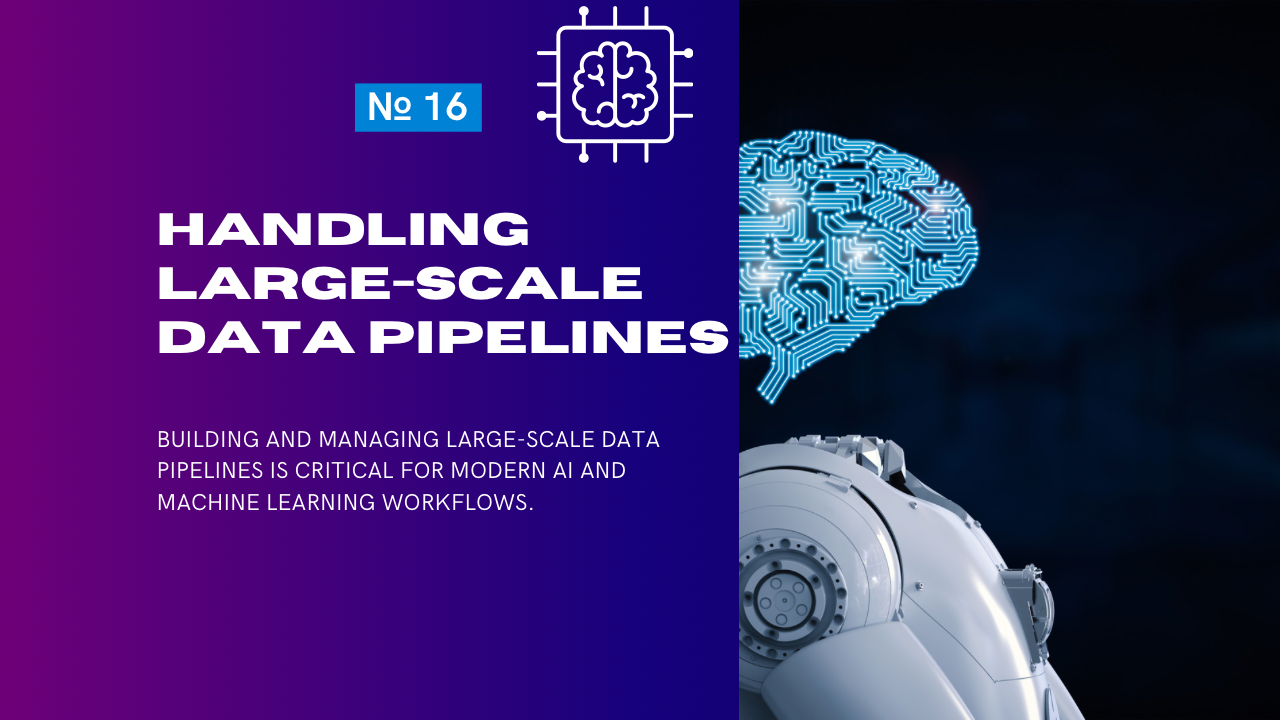Building and managing large-scale data pipelines is critical for modern AI and machine learning workflows. Tools like Apache Airflow and Luigi are widely used to orchestrate workflows, automate repetitive tasks, and ensure pipeline reliability.
This guide compares Apache Airflow and Luigi, their core features, and provides examples to show how they can be used to handle complex data pipelines.
Overview
| Aspect | Apache Airflow | Luigi |
|---|---|---|
| Primary Use Case | Complex, distributed workflows for data engineering and analytics. | Task-based workflows, focused on dependency resolution. |
| Programming Language | Python-based. | Python-based. |
| Scheduling | Built-in scheduler with cron-like capabilities. | Simple time-based scheduling with Python scripts. |
| Scalability | Designed for large-scale workflows, supports distributed systems. | Moderate scalability, better suited for smaller pipelines. |
| Ease of Use | Steeper learning curve, highly configurable UI. | Easier to start, but limited advanced features. |
1. Key Features
Apache Airflow
- Directed Acyclic Graphs (DAGs):
- Represents workflows as DAGs, where each node is a task and edges define dependencies.
- Scheduler:
- Automatically schedules and executes tasks based on specified intervals or triggers.
- Extensibility:
- Rich plugin support and integrations (e.g., AWS, GCP, Hadoop).
- Web UI:
- Provides a powerful interface to monitor, debug, and manage workflows.
- Parallel Execution:
- Optimized for running tasks across multiple workers and nodes.
Luigi
- Task-Based Architecture:
- Focuses on defining tasks and their dependencies programmatically.
- Pipeline Dependencies:
- Resolves task dependencies automatically, ensuring correct execution order.
- Local Scheduler:
- Lightweight and easy to deploy for single-machine or small-scale pipelines.
- Custom Task Definitions:
- Tasks are Python classes with custom logic for execution and output validation.
2. Comparing Use Cases
| Use Case | Apache Airflow | Luigi |
|---|---|---|
| ETL Pipelines | Best for complex, distributed ETL processes. | Suitable for smaller, sequential ETL workflows. |
| Machine Learning Workflows | Orchestrates multi-stage ML pipelines across distributed systems. | Works well for simple ML training pipelines. |
| Data Warehousing | Seamless integration with BigQuery, Redshift, Snowflake, etc. | Limited built-in integrations, requires more customization. |
| Real-Time Pipelines | Not ideal for real-time or micro-batch processing. | Better suited for batch-oriented pipelines. |
3. Implementation Examples
Apache Airflow: ETL Workflow
Below is an example of an ETL workflow in Airflow:
from airflow import DAG
from airflow.operators.python import PythonOperator
from datetime import datetime
# Define task functions
def extract():
print("Extracting data...")
def transform():
print("Transforming data...")
def load():
print("Loading data into the database...")
# Define DAG
default_args = {
'owner': 'airflow',
'depends_on_past': False,
'retries': 1,
}
with DAG(
dag_id='etl_pipeline',
default_args=default_args,
description='ETL pipeline example',
schedule_interval='@daily',
start_date=datetime(2023, 1, 1),
catchup=False,
) as dag:
extract_task = PythonOperator(
task_id='extract',
python_callable=extract,
)
transform_task = PythonOperator(
task_id='transform',
python_callable=transform,
)
load_task = PythonOperator(
task_id='load',
python_callable=load,
)
# Define task dependencies
extract_task >> transform_task >> load_taskKey Features:
- DAG Structure: Tasks are defined as nodes in a DAG.
- PythonOperator: Executes Python functions as tasks.
- Scheduler: Automatically triggers the DAG on a daily basis.
Luigi: Data Pipeline Example
Below is a similar ETL pipeline in Luigi:
import luigi
class ExtractTask(luigi.Task):
def output(self):
return luigi.LocalTarget("data/extracted_data.txt")
def run(self):
print("Extracting data...")
with self.output().open('w') as f:
f.write("Extracted data")
class TransformTask(luigi.Task):
def requires(self):
return ExtractTask()
def output(self):
return luigi.LocalTarget("data/transformed_data.txt")
def run(self):
print("Transforming data...")
with self.input().open('r') as input_file:
data = input_file.read()
with self.output().open('w') as output_file:
output_file.write(f"Transformed: {data}")
class LoadTask(luigi.Task):
def requires(self):
return TransformTask()
def output(self):
return luigi.LocalTarget("data/loaded_data.txt")
def run(self):
print("Loading data...")
with self.input().open('r') as input_file:
data = input_file.read()
with self.output().open('w') as output_file:
output_file.write(f"Loaded: {data}")
if __name__ == '__main__':
luigi.run()Key Features:
- Task-Based Design: Each step is defined as a
luigi.Task. - Dependency Resolution: Automatically resolves and runs dependent tasks.
- LocalTarget: Specifies file-based outputs for task completion tracking.
4. Strengths and Weaknesses
Apache Airflow
Strengths:
- Powerful web-based UI for monitoring and debugging.
- Extensible with plugins for diverse integrations.
- Excellent for large-scale, distributed pipelines.
Weaknesses:
- Higher setup complexity.
- Less suited for lightweight, local workflows.
Luigi
Strengths:
- Simple and lightweight, perfect for small to medium workflows.
- Intuitive task-based programming model.
- Easy to install and run locally.
Weaknesses:
- Limited scalability for distributed workflows.
- Minimal built-in support for modern cloud services.
5. Best Practices
For Apache Airflow:
- Modularize Tasks:
- Break workflows into reusable and independent tasks.
- Use Dynamic Task Generation:
- Generate tasks programmatically for complex workflows.
- Leverage XComs:
- Pass data between tasks efficiently.
For Luigi:
- Task Dependency Design:
- Clearly define
requires()for task dependencies.
- Output Validation:
- Use
LocalTargetor cloud-based targets for tracking outputs.
- Centralized Configurations:
- Use a centralized configuration file to manage pipeline settings.
6. Conclusion
- Apache Airflow is the go-to choice for large-scale, distributed pipelines, especially when cloud integrations and complex scheduling are required.
- Luigi is a lightweight alternative for smaller workflows or projects with simpler requirements.
